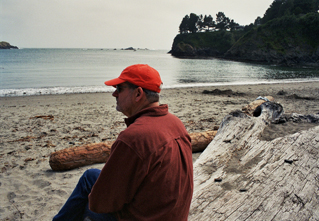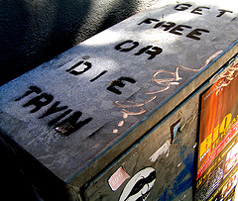We’ll look at all 5 steps over the next couple of weeks. Step 1, today, is an overview, step 2 will be about fundamentals, step 3 will be about tactics, step 4 will be about monthly plans, and step 5 will be about a review cycle.
In any musical ensemble, the real work is done during rehearsal. How you approach rehearsal time, whether you are the director, or a member of the ensemble, will have a lot to do with how the eventual music making turns out. It’s not practice — practice is what you do to get ready to rehearse. Rehearsals should be specifically about getting ready do the music for real.
I am writing this post the week before Jerry Rice, who most consider to be one of, if not the greatest football player to ever play the game, will be enshrined in the Pro Football Hall of Fame. (There is linkage here, because I believe in the parallels between team sports and performance ensembles.) When Rice arrived at his first team practice session, he was matched up against Ronnie Lott, one of the greatest defenders ever to play the game. Lott could tell that Rice was nervous, and there were numerous dropped balls. But here’s the thing: Lott says he saw Rice’s reaction to the drops and knew he would become a star. Here’s Rice’s comment:
“There was no way I was going to be denied. I kept working hard. I didn’t give up and I wanted to be the best football player I could possibly be in the NFL.”
To paraphrase the old joke: It’s not just about practice, practice, practice, but the attitude you have while rehearsing for when the lights come on. Rice’s preparation habits are legendary. Among other things, he routinely ran 2.5 mile sprints up a hill near where I served at a church. But that was just to get ready for the team preparation for the game.
For many directors of amateur ensembles, rehearsals seem to range anywhere from aimless to boring, from crisis management to tyrannical. For the ensemble member there is often no sense of a long-term plan of what a sequence of rehearsals is supposed to accomplish. Many directors have no training or guidelines for how to plan rehearsals with a bigger picture in mind. As a result, their ensemble members have no idea what to practice when they are away from rehearsal.
Hence this series. In the next four posts, we’ll look at how to integrate fundamentals into every rehearsal. We’ll discuss specific tactics to accomplish short and long term goals. We’ll give you guidelines for setting up those long term goals, and we’ll look at how to systematically review what is working and what needs to be fixed.
While the material you’ll be reading is mine, I’m indebted to Dana VanDen Heuvel and the resource 30 Ideas in 30 Days (it is not clear whether this is still available) for the structural reference points to organize my material. If you are interested in marketing, this is a great resource to have.
Check back on Tuesday, August 10, for the next installment. In the meantime, if you have a comment, please let me know what you think below. If you have specific things you want me to cover, I’ll do my best to include them.
…
You can follow me on twitter here
Get my EBook The Choir in Modern Worship here
Join me on facebook here












{ 1 trackback }
{ 2 comments… read them below or add one }
Great stuff! I’m aiming at starting an ensemble at some point in the future, and I can easily see how difficult it will be. So I’m really looking forward to following this series.
So I’m really looking forward to following this series.
What kind of ensemble, holken? I hope that it goes well…advance planning is always helpful when undertaking a new project.
You must log in to post a comment.